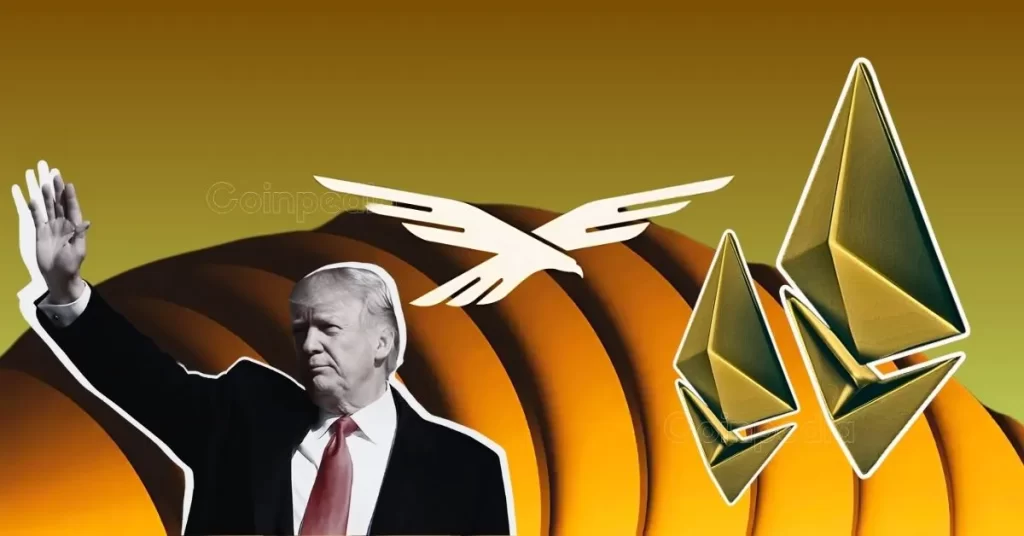BitcoinWorld Ethereum Whale’s Strategic $49.25M Withdrawal: An Intriguing Market Signal In the dynamic world of cryptocurrency, significant movements by large holders, often dubbed ‘whales,’ always capture attention. Recently, a colossal transaction involving an Ethereum whale sent ripples across the market, highlighting the subtle yet profound signals that on-chain activity can provide. This isn’t just about large sums changing hands; it’s about discerning the strategic intent behind such moves and what they might signify for the broader Ethereum ecosystem. Unpacking the Latest Ethereum Whale Movement The crypto community was recently abuzz with news of a substantial withdrawal of Ethereum (ETH) from the institutional trading platform, FalconX. According to on-chain analytics platform Onchain Lens, a newly created wallet received a staggering 12,749 ETH, valued at approximately $49.25 million at the time of the transaction. This significant transfer occurred after the wallet had been inactive for three days, suggesting a deliberate and calculated move by the Ethereum whale behind it. Following this massive inflow, the wallet’s total holdings soared to 80,174 ETH, now valued at an impressive $302.72 million. Such large-scale movements from exchanges are typically interpreted as a strong indication of an intent to hold assets for the long term, rather than an immediate intention to sell. This behavior by a major Ethereum whale can often serve as a bellwether for market sentiment. Why Do Ethereum Whale Withdrawals Matter So Much? When a substantial amount of cryptocurrency, particularly a dominant asset like Ethereum, is moved off an exchange and into a private wallet (often referred to as ‘cold storage’), it sends a powerful message to the market. Here’s why these actions by an Ethereum whale are closely watched: Reduced Selling Pressure: Assets held on exchanges are generally considered ‘hot’ assets, readily available for trading and selling. When they are withdrawn, they are removed from the immediate circulating supply available on trading platforms, which can alleviate potential selling pressure. Intent to Hold (HODL): A withdrawal signals that the holder intends to keep the assets for an extended period, perhaps anticipating future price appreciation. This ‘HODL’ mentality contributes to market stability and can be a bullish indicator. Supply Shock Potential: If many whales withdraw their assets simultaneously, it can lead to a ‘supply shock’ on exchanges, where demand outstrips the available supply, potentially driving prices up. Market Confidence: Large withdrawals by influential entities can instill confidence among smaller investors, suggesting that even the biggest players see long-term value in the asset. Essentially, an Ethereum whale taking their ETH off an exchange is akin to a major investor removing a large block of shares from the public market – it reduces immediate liquidity and signals long-term conviction. Who Are These Influential Ethereum Whales? The term ‘whale’ in cryptocurrency refers to an individual or entity holding a very large amount of a particular digital asset, enough to potentially influence market prices through their trades. These can be: Early Adopters: Individuals who invested in Ethereum during its nascent stages and have held onto their significant bags. Institutional Investors: Large funds, hedge funds, or corporations that have allocated a portion of their capital to cryptocurrencies. Mining Pools/Foundations: Entities that accumulate large amounts of ETH through mining operations or project development. Centralized Exchanges: While this specific withdrawal was from FalconX, exchanges themselves hold vast amounts of user funds, though their movements are typically operational rather than speculative. While the identity of this particular Ethereum whale remains anonymous, their actions are transparent on the blockchain, allowing platforms like Onchain Lens to track and report these significant movements. Understanding who these whales are and what motivates them is key to deciphering market trends. The Power of On-Chain Analytics in Tracking Ethereum Whale Activity How do we know about these massive withdrawals by an Ethereum whale ? This is where on-chain analytics platforms come into play. These sophisticated tools analyze the publicly available data on blockchain networks to provide insights into transactions, wallet activity, and overall network health. Here’s how they help: Feature Description Benefit for Tracking Whales Transaction Tracking Monitors all transactions, including sender, receiver, amount, and timestamp. Identifies large transfers to/from exchanges and specific wallets. Wallet Profiling Categorizes wallets (e.g., exchange, whale, miner) based on their activity patterns. Helps distinguish significant player movements from retail activity. Flow Analysis Visualizes the movement of funds between different entities and addresses. Reveals the ultimate destination of withdrawn funds and potential accumulation. Historical Data Provides access to past transaction data and wallet balances. Allows for trend analysis and identification of recurring whale behavior. Tools like Onchain Lens empower investors and analysts to gain a deeper understanding of market dynamics by observing the actions of key players, including every significant Ethereum whale . What Are the Broader Implications for Ethereum’s Future? While one large withdrawal doesn’t guarantee a specific market outcome, it contributes to a broader narrative. For Ethereum, a significant withdrawal by an Ethereum whale like this could have several implications: Positive Price Sentiment: If more whales follow suit, it suggests a collective long-term bullish outlook, potentially fueling upward price momentum for ETH. Reduced Volatility: Assets held off-exchange are less susceptible to sudden sell-offs during periods of high volatility, potentially contributing to a more stable price floor. Increased Decentralization (Potentially): As more ETH moves into private wallets, it reduces the concentration of assets on centralized exchanges, aligning with the decentralized ethos of crypto. Focus on Staking: With Ethereum’s transition to Proof-of-Stake, large ETH holders might be withdrawing assets to participate in staking, further locking up supply and earning rewards. However, it’s crucial to remember that whale movements are just one piece of the puzzle. Macroeconomic factors, regulatory news, technological developments, and overall market sentiment also play significant roles in shaping Ethereum’s future trajectory. While this specific Ethereum whale move is intriguing, it should be viewed in context. How Can You Track Significant Ethereum Whale Moves? You don’t need to be an on-chain expert to keep an eye on significant crypto movements. Here are some actionable insights for tracking an Ethereum whale and other large holders: Follow On-Chain Analytics Platforms: Many platforms like Arkham Intelligence, Nansen, Etherscan (for basic transaction viewing), and even services like Whale Alert (on X) provide real-time or near real-time updates on large transactions. Understand Wallet Types: Learn to differentiate between exchange wallets, smart contracts, and individual wallets. While identifying the owner of a private wallet is difficult, recognizing patterns of activity (e.g., consistent accumulation, large withdrawals) can be insightful. Look for Trends, Not Just Single Events: A single large withdrawal is notable, but a consistent pattern of withdrawals over time is a stronger indicator of a collective bullish sentiment among whales. Combine with Other Analysis: Don’t make investment decisions solely based on whale movements. Combine this data with fundamental analysis (Ethereum’s development, ecosystem growth) and technical analysis (price charts, indicators) for a more comprehensive view. By staying informed and utilizing available tools, you can better understand the undercurrents of the crypto market, including the powerful influence of the Ethereum whale community. The recent $49.25 million ETH withdrawal by an Ethereum whale from FalconX is more than just a large transaction; it’s a strategic maneuver that provides valuable insight into the mindset of major holders. Such movements, often signaling an intent to hold rather than sell, can have a profound impact on market sentiment, potentially reducing selling pressure and contributing to a bullish outlook for Ethereum. While the identity of this particular whale remains private, the transparency of blockchain technology, aided by sophisticated on-chain analytics platforms, allows us to observe and interpret these crucial signals. As the crypto market continues to evolve, understanding the actions of these influential players remains vital for anyone looking to navigate its complexities and anticipate future trends. Frequently Asked Questions (FAQs) Q1: What is an Ethereum whale? An Ethereum whale is an individual or entity that holds a very large amount of Ethereum (ETH), typically enough to influence market prices through their significant buying or selling activity. There’s no fixed definition for the exact amount, but it generally refers to wallets with hundreds of thousands or millions of dollars worth of ETH. Q2: Why is an ETH withdrawal from an exchange considered significant? A withdrawal of ETH from an exchange is significant because it suggests the holder intends to keep the assets for the long term (HODL) rather than sell them immediately. Assets on exchanges are readily available for trading, so moving them off reduces the immediate supply available for sale, which can be seen as a bullish signal and reduce selling pressure. Q3: How do on-chain analytics platforms track whale movements? On-chain analytics platforms like Onchain Lens monitor public blockchain data. They track large transactions, analyze wallet balances, identify patterns of activity, and often categorize wallets (e.g., exchange wallets, whale wallets) to provide insights into where funds are moving and what large holders are doing. Q4: Does this specific withdrawal guarantee an ETH price increase? No, a single withdrawal by an Ethereum whale does not guarantee a price increase. While it’s generally considered a bullish signal, the crypto market is influenced by numerous factors, including macroeconomic conditions, regulatory news, technological developments, and overall market sentiment. It’s one piece of data among many to consider. Q5: What is FalconX? FalconX is a digital asset prime brokerage that provides institutional investors with a platform for trading, credit, and clearing services for cryptocurrencies. It caters to large financial institutions, hedge funds, and other major players in the crypto space. Q6: How can I identify a newly created wallet on the blockchain? You can identify a newly created wallet by its transaction history. If a wallet address shows its first incoming transaction (especially a large one) without any prior activity, it’s typically a newly created address. On-chain analytics platforms often highlight such new wallets that receive significant funds. If you found this analysis insightful, please consider sharing it with your network! Your support helps us continue to deliver valuable content on the ever-evolving world of cryptocurrency. To learn more about the latest Ethereum trends, explore our article on key developments shaping Ethereum institutional adoption . This post Ethereum Whale’s Strategic $49.25M Withdrawal: An Intriguing Market Signal first appeared on BitcoinWorld and is written by Editorial Team















